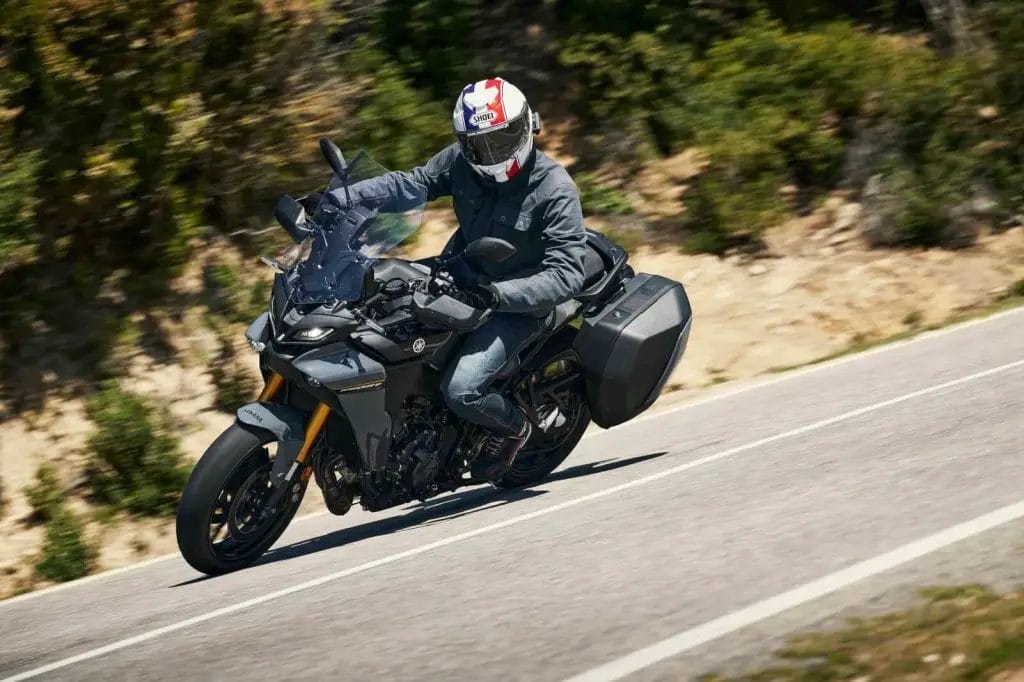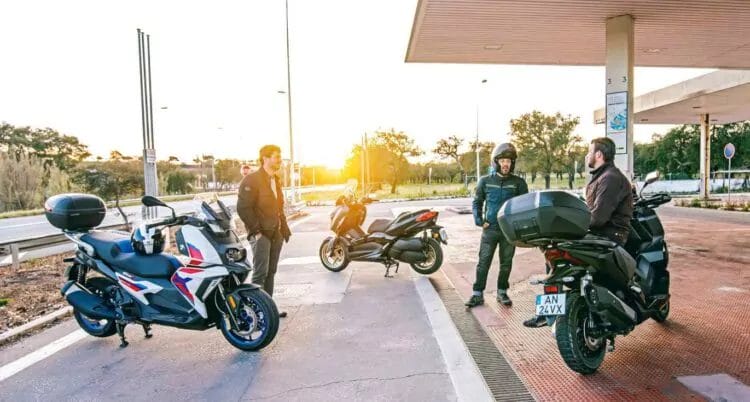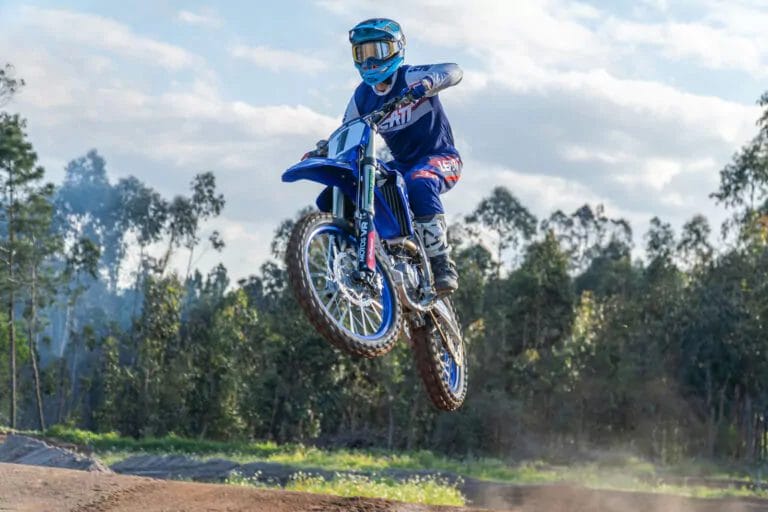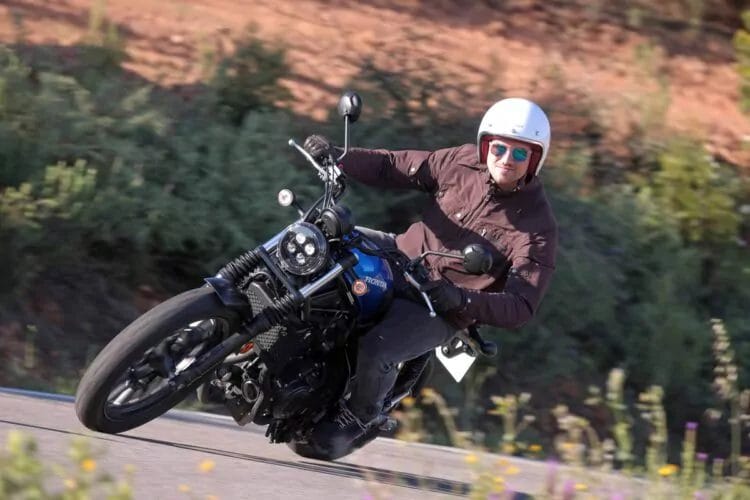There’s always a lot of information on this subject, but as the helmet is the most important piece of equipment when riding a motorcycle – and we don’t always find the most accurate or appropriate information on the internet – we’re going to leave our opinion here, and some tips from our many years of experience testing motorcycles. Why do we say that the helmet is the most important piece of equipment? Because it’s the only one that’s compulsory, but also because it protects the most sensitive areas of our body, face and head, and any fall – even at a very low speed – can turn into a tragedy. So if you often see videos of people riding motorcycles (and sometimes doing stunts) on closed roads or even in a backyard without a helmet, don’t try to replicate it. Any mistakes can be very costly.
Tips
First of all, we don’t recommend buying a second-hand helmet. A helmet has a lifespan of 5 years – before some plastics and interior foams start to lose their properties – so it’s better to invest in a new product and use it until the end. What’s more, even in terms of hygiene, it’s not the most pleasant thing to wear a helmet that’s been on someone else’s head. That’s why we also recommend that you remove the inner liner frequently (especially if you get water inside during the winter or a lot of sweat during the summer) and wash it by hand under running water with your usual shampoo. It will even smell nicer!
Integral

When it comes to choosing a helmet, it really depends on your budget and how you’re going to use it, but in general, a full-face helmet will always be the best option when riding on the road. Because it offers good protection (another time we’ll talk about the various options in terms of construction materials) and because in aerodynamic terms it will always be a better option, especially if you’re riding a motorcycle without aerodynamic protection. The helmet should fit snugly to the face and head (squeezing the cheeks a little but not hurting), as it will widen slightly with use. If you wear glasses to see, make sure you try the helmet on with your glasses, and if the helmet only has a dark visor fitted, make sure you buy a light visor too. Even if you don’t usually drive at night, there will always be a day when you have to, and we don’t recommend at all that you do it with a dark visor or that you drive with an open visor. Another solution – which is not usually available on sportier full-face helmets – is to include a small inner sun visor, which is often a good solution, so you don’t have to constantly change your visor. A few more tips that apply to all types of helmets: don’t forget to check the interior for European homologation, in this case the current ECE 22.06 will do, but if you have an older helmet you can continue to use it. Also important, and which we highly recommend, is the presence of a Pinlock, a film that is placed on the inside of the visor and prevents it from fogging up. And we all know how terrible it is to drive with a foggy visor! Another aspect to take into account is the way the helmet is closed. It should fit snugly to your chin/neck, and although the double-ring system (or D-ring) may seem “old-fashioned” at first glance, it’s actually the safest and the one we find in sports helmets, so it’s sure never to fail.
Adventure

An adventure helmet is somewhere between a full-face helmet and an all-terrain helmet, so everything we’ve just said also applies to this helmet so popular with trail lovers. The biggest difference here is the look, which is more similar to motocross helmets, with a visor and chin guard, although with the presence of a visor (and usually a sun visor inside). For intensive off-road use, it is usually possible to remove the visor and put on motocross goggles, which is another advantage of this type of helmet. However, due to the visor and chin guard, this type of helmet will never offer the same aerodynamic comfort on the highway as a full-face helmet, especially if the bike doesn’t offer high aerodynamic protection.
Modular

The modular helmet has grown a lot in popularity over the last few years, especially among those who enjoy long journeys or simply those who need a versatile helmet that adapts to all situations, from daily city riding to touring. The fact that we can raise the chin area and visor is a plus for many, especially on warmer days, but it’s best to use this “open helmet” version only when we’re stationary, so that when we’re moving, and for natural safety reasons, it continues to offer the protection of a full-face helmet. Normally, all modular helmets are also equipped with a sun visor and can easily be fitted with intercom systems. As they are very versatile helmets, they are also sometimes a little heavier, which is always important in a helmet (especially if you ride naked bikes), as is noise. And if a helmet has a lot of parasitic or aerodynamic noise, the only solution is earplugs! There are also models where, in addition to the outer size, you can choose the size of the shell (the helmet’s inner protection), which is ideal, so that whatever the size of the wearer’s head, the protection is always the same.
Motocross and open


We’ve left the more specific types of helmets, such as motocross/enduro helmets and open-top helmets, until last (although there are still a few more types of helmets today, especially those with a more retro design). The former are intended almost exclusively for off-road riding, although many also like to ride with them on the road. Above all, if you use motocross goggles on the road, do so with specific glasses and not just sunglasses. And once again, pay attention when riding on highways, as the MX visor can create some discomfort and turbulence.
As for open-fronted helmets, there are many options, from jet helmets to helmets with a small visor or a full visor. Naturally, these are the least safe helmets of the lot, with your face much more exposed in the event of an accident and even to the natural elements (water, dust, insects, etc.). Of course, during the summer it feels good to wear an open face helmet, but above all, avoid wearing them on the highway or on long journeys (not least because of the risk of sunburn), as well as on more powerful motorcycles or when riding more sportily. Above all, when riding a motorcycle, protection can never be too much.







